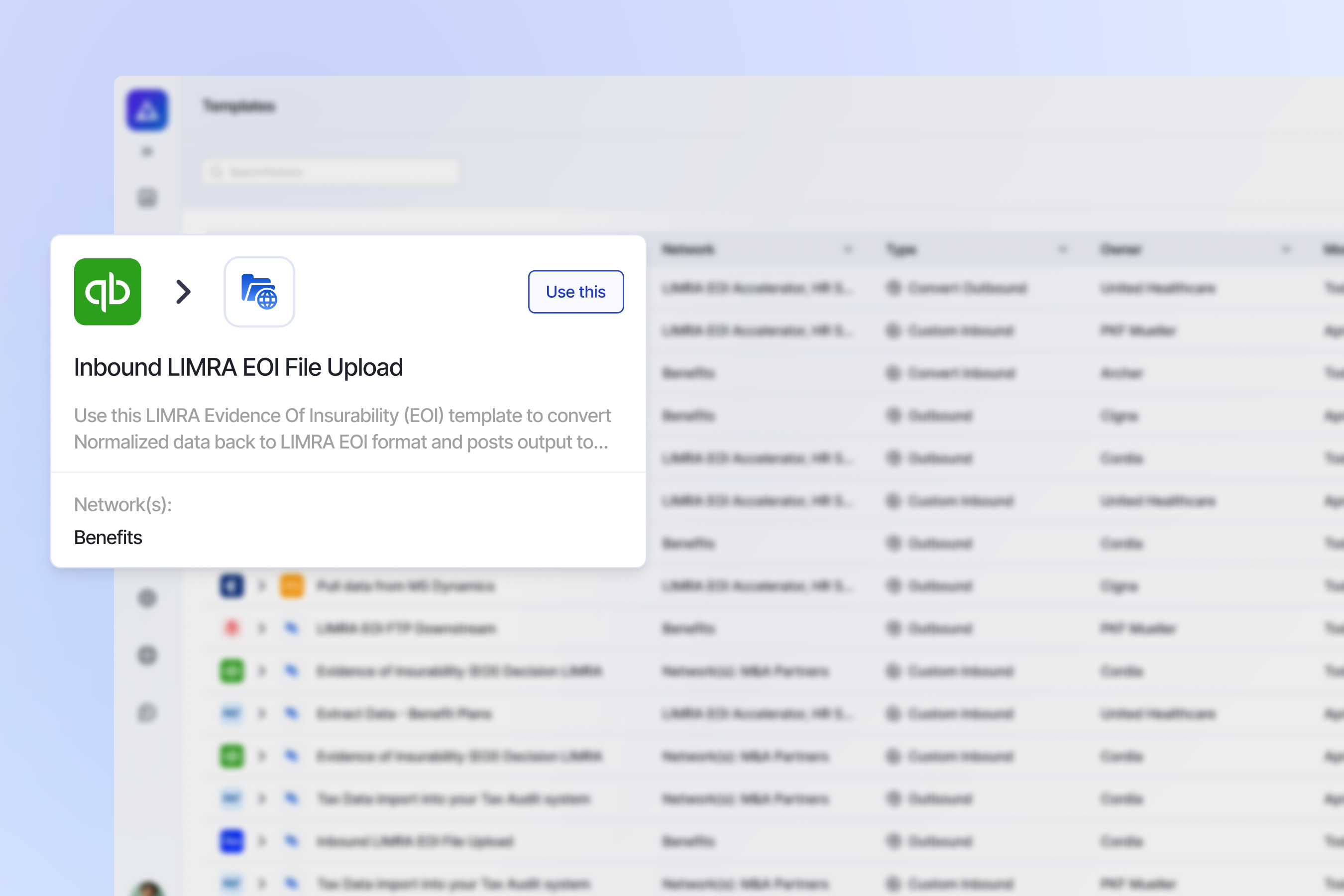Introducing Adeptia Automate
Discover Adeptia Automate, the next-generation Intelligent Data Automation™ platform that accelerates first-mile data integration with AI and scale.
Read the blogAdeptia for Financial Services





Financial companies are flooded with messy, unstructured data in the form of legal documents, invoices and financial reports. This First-mile Data™ is often trapped in PDFs, emails, or legacy formats, creating delays, errors, and manual rework.
Adeptia enables companies across the finance space to efficiently connect with customers and intermediaries throughout their ecosystems and access the first-mile data they need to accelerate revenue and simplify operations.

Streamline the complex exchange of retirement plan data between employers, administrators, and recordkeepers.
Accelerate transaction processing, reduce errors, and improve cash flow with automated payment data exchange.
Reduce onboarding from months to days by empowering business users to configure connections without coding.
Automate document intake, data extraction, and approval workflows to accelerate lending decisions and improve customer experience.
Consolidate data from multiple sources for analytics, reporting, and regulatory compliance with automated data pipelines.
Connect legacy financial systems with modern platforms without costly replacements or disruptions.
One of the largest commercial bank in the United States offers a comprehensive line of banking, investment, mortgage, trust, and payment products to consumers, businesses, and institutions.
Company Size
Enterprise
Industry
"A single architecture, a single platform, and a single source of truth are all the Bank needs to remain competitive in the financial marketplace."
Who We Serve




Who We Serve
Resources

Intelligent automation transforms messy EOI PDFs into clean, validated data—cutting manual work, reducing errors, and speeding coverage decisions....

Automate and streamline Evidence of Insurability processing with Adeptia Automate™ for faster, accurate, and compliant enrollment data exchange....

Go beyond iPaaS. Adeptia’s Intelligent Data Automation™ helps group health providers automate, validate, and scale employee enrollment with AI-driven accuracy....